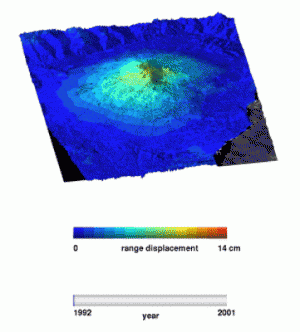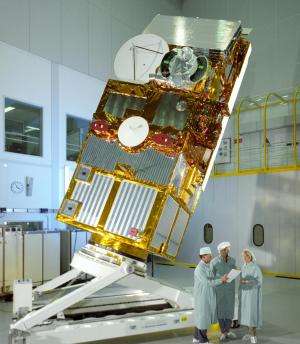Pioneering ERS environment satellite retires

After 16 years spent gathering a wealth of data that has revolutionized our understanding of Earth, ESA's veteran ERS-2 satellite is being retired. This pioneering mission has not only advanced science, but also forged the technologies we now rely on for monitoring our planet.
ERS-2 was launched in 1995, following its sister, the first European Remote Sensing satellite, which was launched four years earlier.
Carrying suites of sophisticated instruments to study the complexities of the atmosphere, land, oceans and polar ice, these two missions were the most advanced of their time, putting Europe firmly at the forefront of Earth observation.
The twin satellites were identical, apart from ERS-2's additional instrument to monitor ozone in the atmosphere. Both exceeded their design lifetime by far, together delivering a 20-year stream of continuous data.
In 2000, ERS-1 unexpectedly stopped working and now it is time to bid farewell to ERS-2 before it succumbs to a similar fate.
To avoid ERS-2 ending up as a piece of space debris, ESA will take the satellite out of service by bringing it down to a lower orbit while there is still sufficient fuel to make the careful manoeuvres.

The decision to retire ERS-2 was not taken lightly, but after orbiting Earth almost 85 000 times – travelling 3.8 billion km – the risk that the satellite could lose power at any time is clearly high.
The deorbiting procedure will be carried out over a number of weeks by spacecraft operators and flight dynamics experts at ESA's European Space Operations Centre in Germany.
Starting on 6 July, a series of thruster burns will gradually lower the satellite's orbit from its current altitude of 800 km to about 550 km, where the risk of collision is minimal. Eventually, ERS-2 will enter Earth's atmosphere and burn up.
Its destruction will occur within 25 years, in accordance with European Code of Conduct on Space Debris Mitigation.
ERS-2 has been delivering data right to the end. In one of its last operations, the satellite was placed in an orbit that allowed it to capture radar images every three days of some of Earth's most rapidly changing features.
Provided by European Space Agency


















